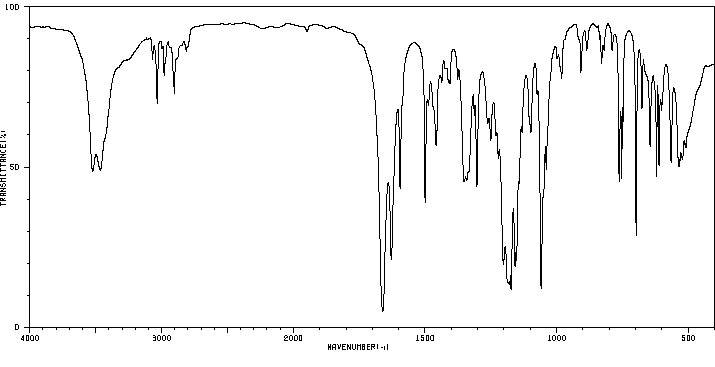毒理性
◉ 母乳喂养期间使用概述:母亲摄入后,安乃近及其代谢物以相当大的量出现在母乳中。在母乳喂养婴儿的血液和尿液中发现了安乃近,并可能对母乳喂养婴儿产生药理效应。一例母乳喂养婴儿出现青紫发作的情况归因于母乳中的安乃近。在服用一剂后48小时内,安乃近及其代谢物从母乳中排出。
安乃近未在美国获得食品药品监督管理局的市场批准,也未在加拿大和许多欧洲国家获得批准,因为其不良反应,包括粒细胞缺乏症。然而,在许多其他国家,在分娩和母乳喂养期间广泛使用安乃近。欧洲药品管理局建议不要在哺乳期母亲中使用安乃近;然而,以色列的几个药物咨询中心对此表示异议。一家制造商建议在服用一剂后48小时内暂停哺乳。在母乳喂养期间,有更安全的替代品可用于镇痛。
◉ 对母乳喂养婴儿的影响:一名42天大的母乳喂养婴儿在母亲口服3剂安乃近500毫克后30分钟内出现了2次青紫发作,分别在第一次发作前18、7和2小时。第三次发作发生在入院后24小时。在最后一剂服用后24小时,在母亲的母乳中和婴儿的血清和尿液中检测到了安乃近。除了安乃近之外,没有找到青紫发作的其他解释,在暂停母亲的安乃近摄入后,婴儿在3岁之前没有再发生进一步的发作。这种反应被认为是可能由母乳中的安乃近引起的。
在一项双盲研究中,至少分娩后3天的母亲请求缓解产后子宫疼痛的镇痛剂,被给予1克安乃近或安慰剂。在药物给药后14小时内,接受安乃近的母亲所生的婴儿哭闹次数较少,持续时间较短,比接受安慰剂的母亲所生的婴儿更明显。这种效果在按需喂养的婴儿中比在定时喂养的婴儿中更为明显。尽管这项研究似乎表明了安乃近在乳汁中对婴儿产生药理效应,但婴儿行为改变的合理解释尚不明确。
在巴西的一项多中心病例对照研究中,比较了在2岁前发展成白血病的231名儿童与411名患有各种其他非恶性疾病的儿童。采访了母亲以确定她们在怀孕和哺乳期间使用止痛药的情况。在分娩后三个月内服用安乃近的哺乳期母亲,其孩子患急性淋巴细胞白血病的风险增加2倍,在一岁以下婴儿中MLL基因重排的风险增加3.87倍。
◉ 对泌乳和母乳的影响:截至修订日期,没有找到相关的已发布信息。
◉ Summary of Use during Lactation:After ingestion by the mother, dipyrone and its metabolites appear in breastmilk in rather large amounts. It is found in the blood and urine of breastfed infants and can cause pharmacological effects in the breastfed infant. One case of cyanotic episodes in a breastfed infant was attributed to dipyrone in breastmilk. The drug and metabolites are eliminated from the breastmilk by 48 hours after a dose.
Dipyrone is not approved for marketing in the United States by the U.S. Food and Drug Administration nor in Canada and many European countries because of its adverse reactions, including agranulocytosis. However, it is widely used in other countries during labor and breastfeeding. The European Medicines Agency recommends that dipyrone not be used in nursing mothers; however, several drug consultation centers in Israel disagree. One manufacturer recommends to withhold breastfeeding for 48 hours after a dose. Safer alternatives are available for analgesia during breastfeeding.
◉ Effects in Breastfed Infants:A 42-day-old breastfed infant had 2 cyanotic episodes within 30 minutes after his mother took 3 doses of dipyrone 500 mg orally, 18, 7 and 2 hours before the first episode. A third episode occurred 24 hours after admission to the hospital. Dipyrone was detected in the mother's breastmilk 24 hours after the last dose and in the infant's serum and urine. No explanation could be found for the cyanotic episodes other than dipyrone and after suspending maternal dipyrone intake, no further episodes occurred in the infant up to age 3 years. The reaction is rated as possibly caused by dipyrone in breastmilk.
In a blinded study, mothers who were at least 3 days postpartum and requesting analgesia for postpartum uterine pain were given either 1 gram of dipyrone or placebo. The infants of mothers who received dipyrone cried fewer times and for shorter durations in the 14 hours after drug administration than the infants of mothers who received placebo. This effect was more apparent in infants who demand fed than in those who fed on a fixed schedule. Although this study appears to demonstrate a pharmacologic effect in the infants from dipyrone in milk, there is no clear explanation for the change in infant behavior.
A multicenter case-control study in Brazil compared 231 children who developed leukemia before 2 years of age with 411 children with various other nonmalignant diseases. Mothers were interviewed to ascertain their analgesic use during pregnancy and lactation. Nursing mothers who took dipyrone during the three months after delivery had a 2-fold risk of having a child with acute lymphocytic leukemia and a 3.87-fold risk in having rearrangement of the MLL gene in infants under one year of age.
◉ Effects on Lactation and Breastmilk:Relevant published information was not found as of the revision date.
来源:Drugs and Lactation Database (LactMed)







